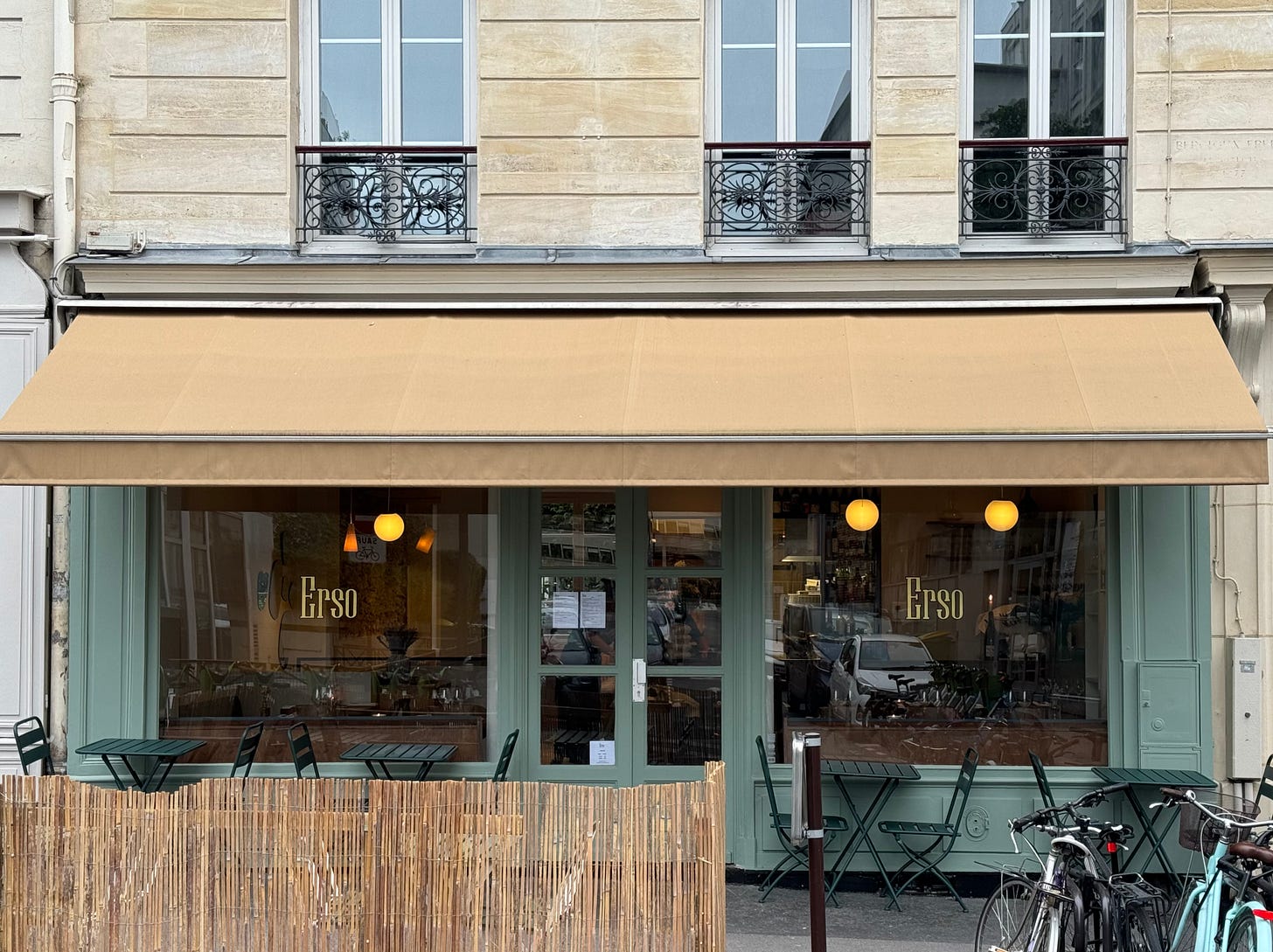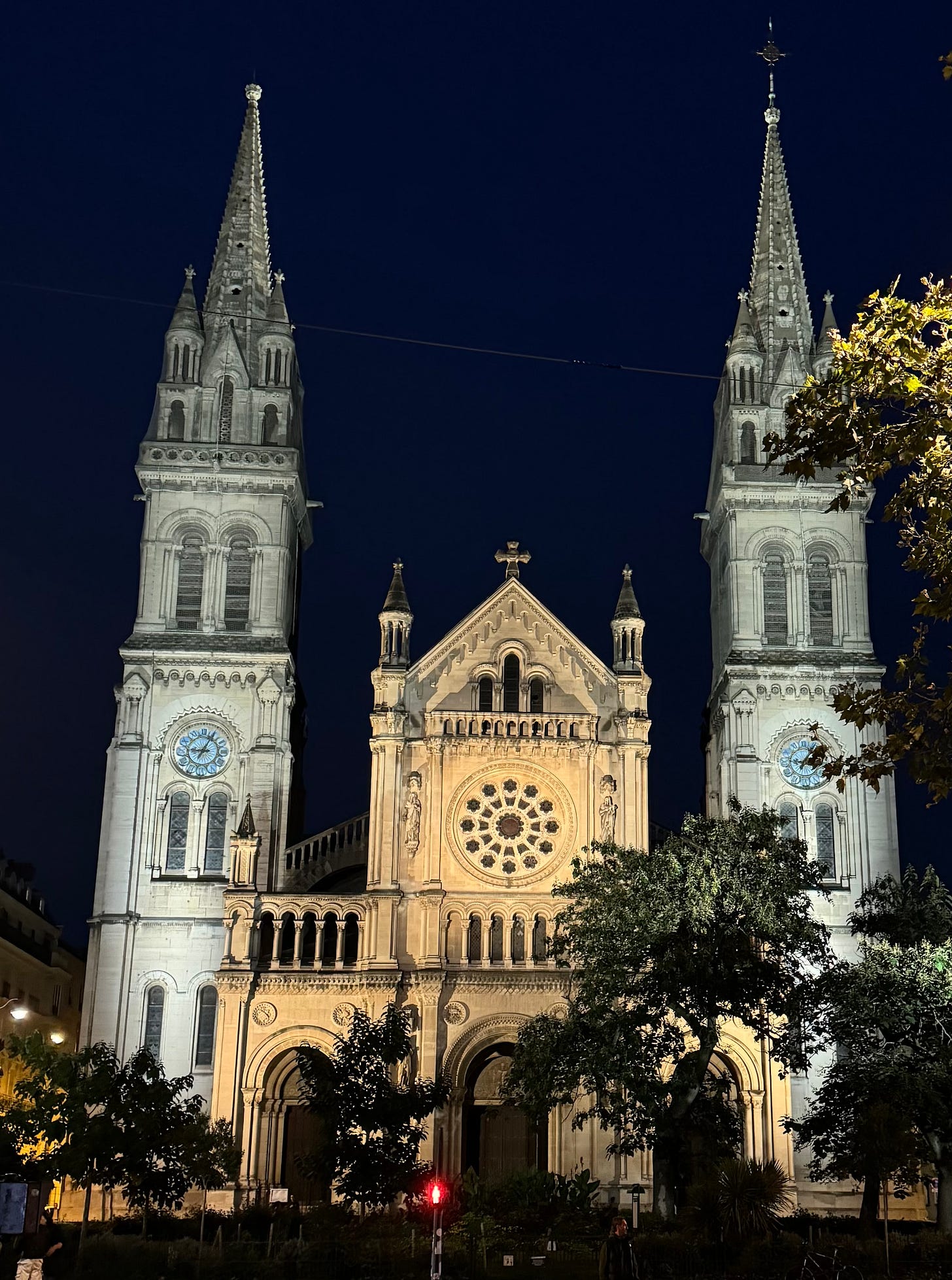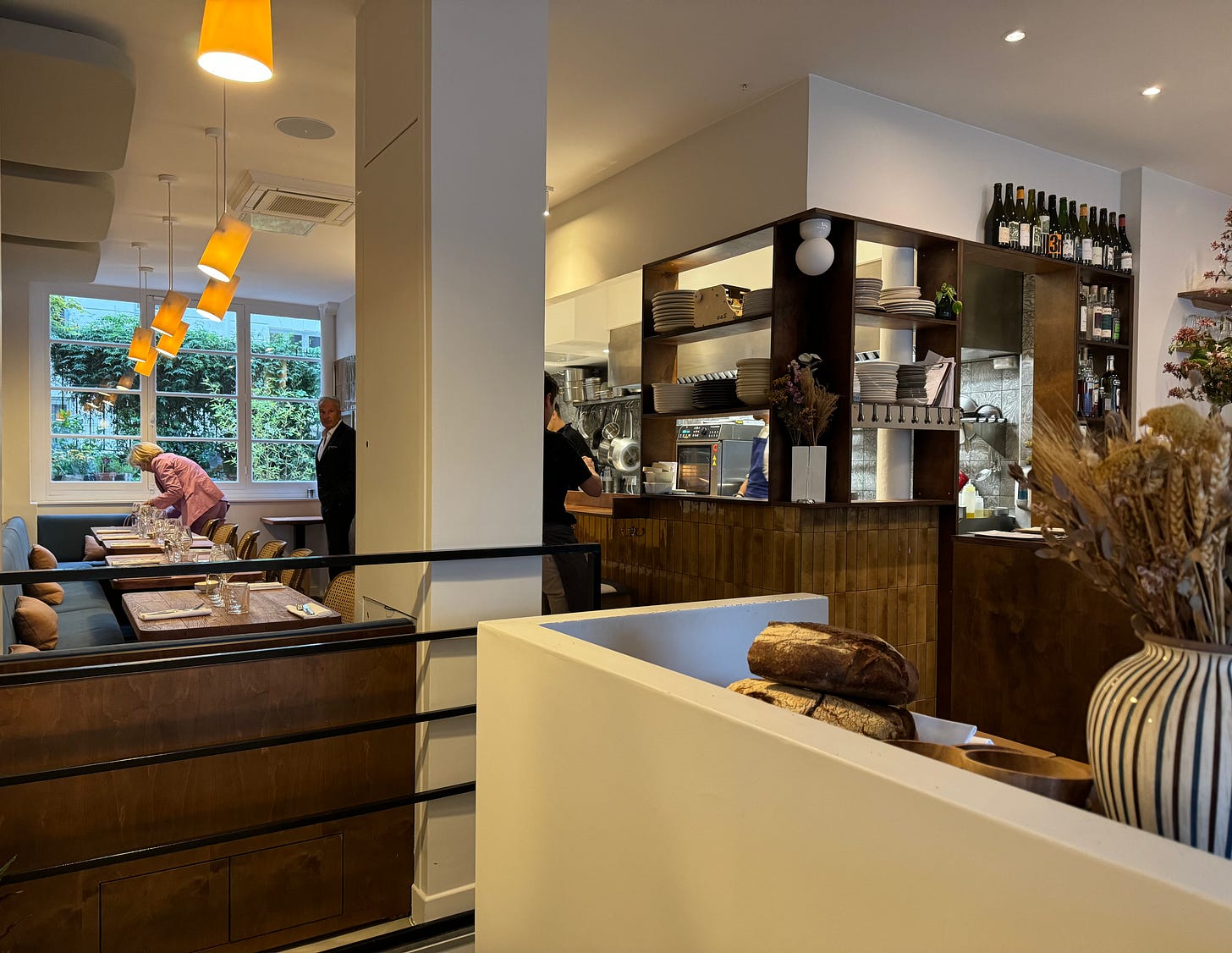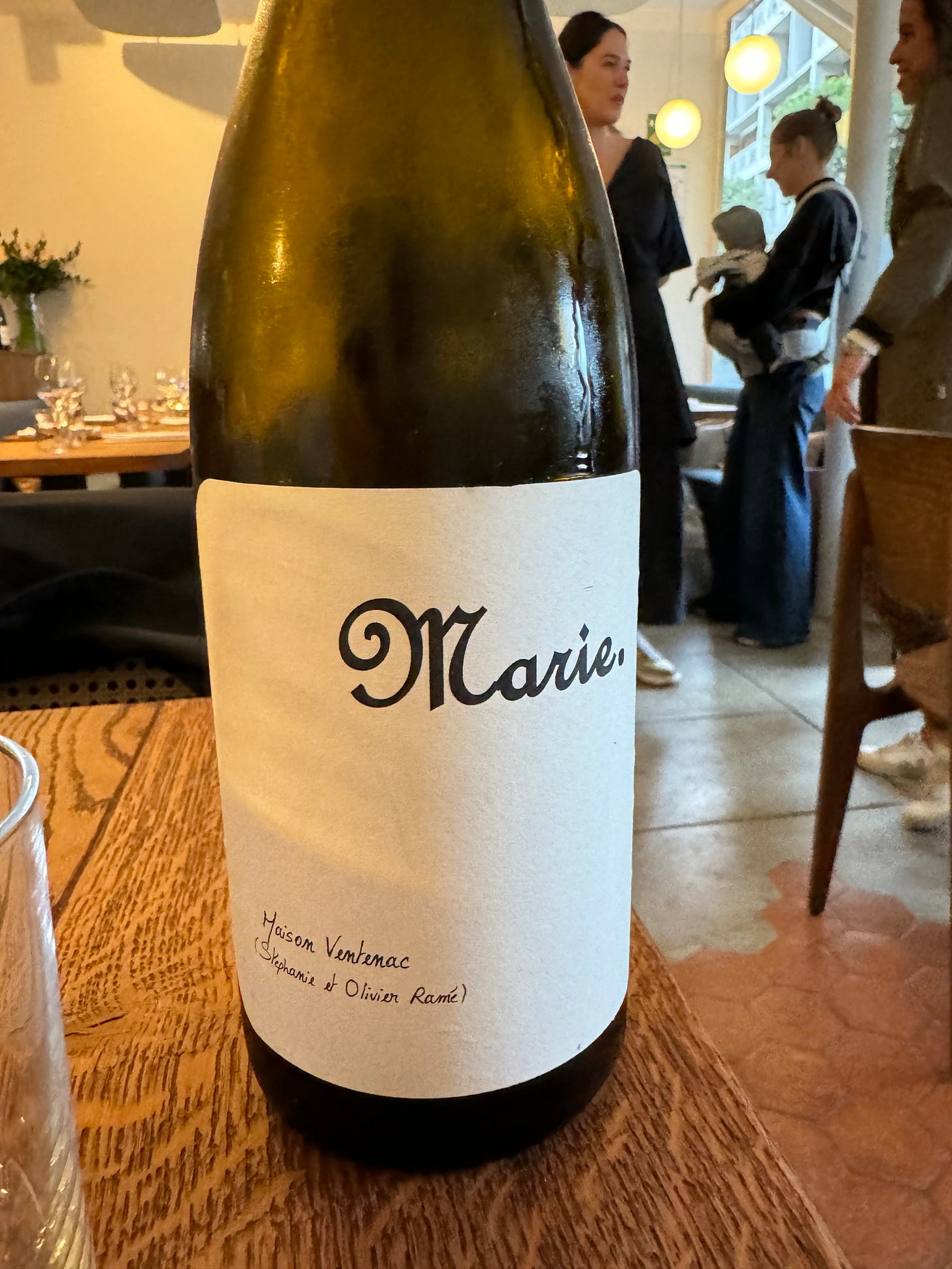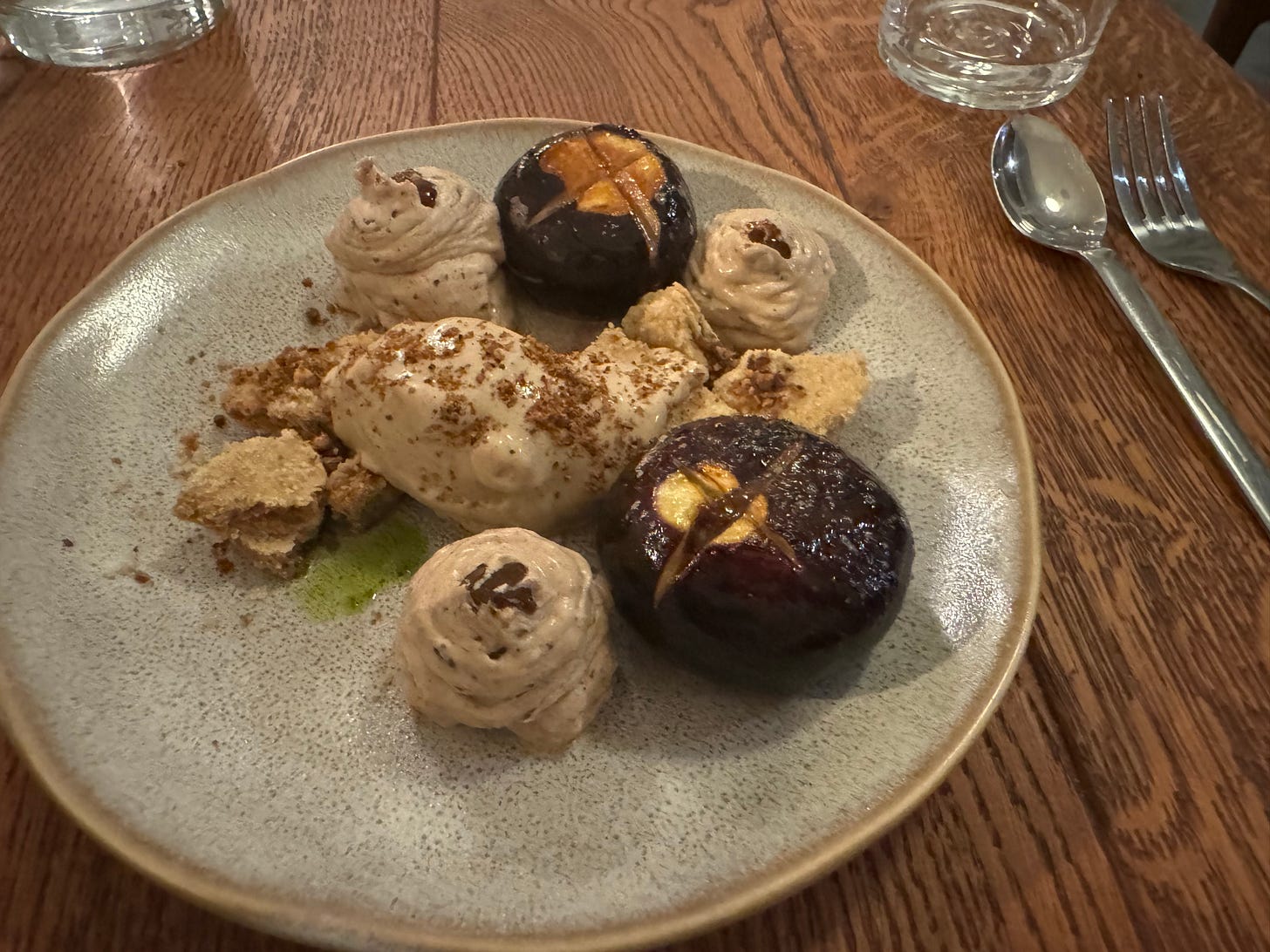Erso is Provençal for “wave” (as in ocean wave). The young couple Yann Placet et Marine Bert, both from the south of France, opened the restaurant this past July, and the name apparently signifies seizing the wave, as in surfing.
Both Placet and Bert trained at the prestigious Ferrandi restaurant school in Paris’s sixth arrondissement. Placet then worked with various starred chefs before moving to La Pantruche in Paris’s ninth arrondissement, where he was first sous-chef and then for three years was chef de cuisine. Bert, who takes care of the front of the restaurant, also was at Pantruche prior to this venture.
The restaurant lies a block up from the nineteenth century neogothic-neoromanesque-neobyzantine mishmash St-Ambroise church that gives the quarter and the street on which the restaurant is located their name.
The restaurant can seat about forty people at indoor tables; there are an additional four or five counter seats that look onto the kitchen, and also outdoor seating, although on this particular evening, even though mild, everyone sat indoors. The room is light and airy with modern furnishings; although there are hard surfaces, there are also noise dampeners.
Outside of myself and another table of a three-generation mixed American and French family, everyone in the restaurant seemed to be French and as far as I could tell, lived in the neighborhood. That made it even more surprising that by eight p.m., the restaurant was nearly at indoor capacity; indeed, I don’t recall anyone arriving after 8.20.
The carte is short and focused, with Provençal-inspired dishes.
The wine list has many, if not exclusively, natural wine producers, but all that I know are of good quality and not radical in the wines they produce. Interestingly, no bottle of wine is more expensive than 81€, although in part that is due to modest mark-ups on the wines. The selection of wines by the glass:
I started with a glass of white from the Languedoc, labelled on the carte as from the Colombard grape, but I believe there is also a substantial amount of Vermentino (Rolle) in the wine. At any rate, it was crisp, mineral, and medium-weight, making for a good aperitif and also to carry over to the first course.
I’m sad to say that the first course for me was a disappointment. I took the langoustines, advertised to be with dried cherry tomatoes, marinated white grapes, marigold gel, and a veil of water flavored with fennel, and finally a sabayon of amaretto. I couldn’t find any dried cherry tomatoes, the acidity from which might have pulled the dish together. Additionally, I found the marigold gel had an unappealing texture. And last, the sweetness from the marinated grapes did not fit, but rather added an extra distraction. In short, both in texture and flavor, there was too much going on, resulting in an unfocused dish:
For my main course, I took the stuffed saddle of lamb, which was excellent, even if the mousseline of coco beans was rather pedestrian:
With the labmb, I had a glass of the Mas Foulaquier, Languedoc “Violetta”. It is an estate I am very familiar with and like; unsurprisingly, the wine was an excellent match with the dish, being rich, deep, and balanced:
I normally would have skipped dessert, as I was already rather full, but the figs sounded so appealing that I simply couldn’t ignore them. They were a sensualist’s delight in texture and flavor and completely set the season on the hinge between summer and autumn, and well matched by the praliné cream and tonka ice cream:
Other than the first course, I liked the meal I had, and the restaurant, which was nearly full on a weeknight, had a joyous vibe to it.
I’ll schedule another meal or two in the coming months to get a more precise bead on the restaurant, but in the meantime, if you are in the area, it is worthy of your consideration.
The bottom line:
Erso
18, rue Saint-Ambroise, 75011 Paris
Tél: 01.81.69.96.55
Tuesday-Saturday lunch and dinner
Métro: Saint-Ambroise, Rue Saint-Maur, Père Lachaise



